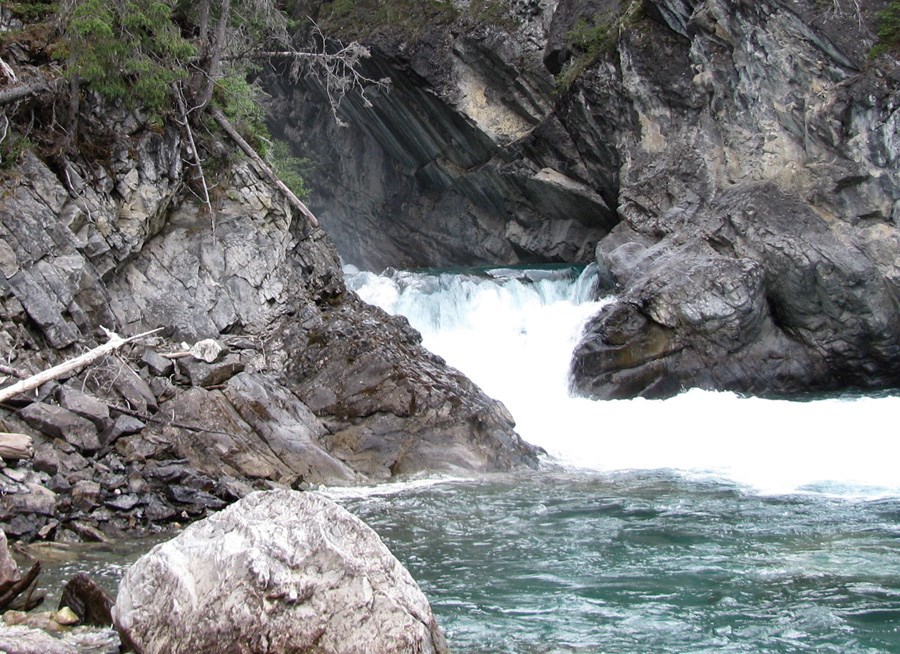Families are turned loose in the summertime for recreation of all kinds, but the backcountry is never busier than it is right now. Autumn is when the bush gets its influx.
In order to keep the woods and lakes from becoming every hunter's bathroom, and to keep Search And Rescue efforts from peppering the landscape, the province provides campsites. Apart from the parks of the region, where ecosystem protection is as much a mandate as enjoying nature, there are forestry rec sites. These are strategically placed locations where backcountry users - loggers, hunters, sightseers, geologists, fishers, photographers, ministry staff, etc. - have identified good spots to park for the night. Those spots receive a few special touches (maybe an outhouse, perhaps some fire pits, a garbage can or two, etc.) to encourage use.
"Our sites are rustic in nature. The facilities are very basic," said Jim Ladds, regional manager of Recreation Sites and Trails B.C., the responsible division of the Ministry of Forests, Lands and Natural Resource Operations.
"There is no electricity, nor potable water, nor plug-ins or sani-dumps. What they do provide is more of a backcountry wilderness experience than a full-service campgoud or RV park would provide. There appears to be a substantially growing trend towards that kind of experience."
The northern region extends from Quesnel to the Yukon border, from the Alberta line to the ocean. Within that are 450 campsites and 300 trails (excluding municipal, provincial and national parks). In the Prince George-Mackenzie area alone there are more than 100 forestry campsites. All are on Crown land and all (but one - the heavier-use Peterson's Beach on the north shore of Fraser Lake) are free of charge. The first ones were cut out of the bush in the first years of the 20th century but public over-use through the 1970s required more to be installed, in order to protect the overall forest landscape.
"I'm a hunter myself. It's great to have those facilities there," said Ladd, but his otherwise pleasant job of fostering the love of super-natural British Columbia has a dark side. He has to constantly deal with mess, vandalism and even danger.
The worst scenarios involve firearms being discharged at the rec. sites, despite the possibility of unseen people being nearby. Often, said Ladd, the shooters mean nothing more than to squeeze off some test shots, reset their gun or bow sights, or have some fun with targets. However, the law explicitly prohibits shooting (bullets or arrows) within a recreation site, for life-and-death reasons.
So too are there rules banning the hanging of carcasses or the discarding of animal matter within rec. site boundaries. Obtaining meat is exactly why he and many others head into the backcountry every fall, he said, but the bodies have to be treated in their prescribed ways so bears and other predators are not summoned by the nose into places where the public sleeps.
Some, perhaps considering it a favour to the next successful hunters, leave their hoist poles in place once they have lifted the heavy game into the back of their vehicle. This can cause problems too, said Ladd, and stressed the importance of taking them down and removing them from the campsite area.
Sensible recreational vehicle (typically quads) use is also required. Too many drivers are cutting ruts in the backcountry, which have negative environmental repercussions even if the drivers think their tracks are harmless. Flying dust is generally OK, but flying dirt or mud, or the leaving of tire imprints, can be legally actionable.
"The type of recreational user going to the backcountry is generally very responsible, whether they are fishers or hunters or family campers," said Ladd.
"The general trend is, they care more for their surroundings."
That spirit is what keeps forestry rec. sites viable. Some are maintained by contractors - usually not-for-profit associations working for a stipend, or outdoors clubs volunteering as part of their conservation mandate, some are spruced up by available wildfire crews during slow times.
"The fourth way is the public: caring people who leave their sites tidy and neat, they pack out what they packed in... Those are especially important needs for our most remote sites which are primarily user-maintained. They are small sites, but they provide some important basic facilities in the deep backcountry. Hunters are predominantly the biggest users, people come to B.C. from all over the world and come into contact with those sites, so it is particularly important to maintain those sites with good camping behaviour."
Ladd said new, sturdy, helpful maps were recently produced showing forestry rec site locations. The Backroads Map Book is available at most tourism or backcountry user outlets.



